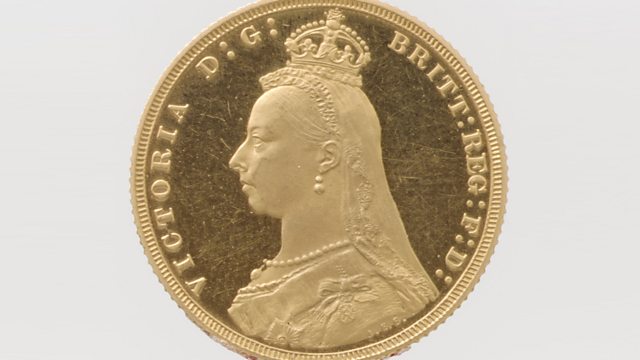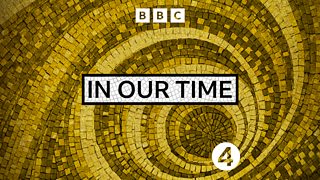The Gold Standard
Melvyn Bragg and guests discuss the age of gold, from 1870, when many nations tied their currencies to gold in the hope of economic stability and increasing trade around the world
Melvyn Bragg and guests discuss the system that flourished from 1870 when gold became dominant and more widely available, following gold rushes in California and Australia. Banknotes could be exchanged for gold at central banks, the coins in circulation could be gold (as with the sovereign in the image above, initially worth £1), gold could be freely imported and exported, and many national currencies around the world were tied to gold and so to each other. The idea began in Britain, where sterling was seen as good as gold, and when other countries rushed to the Gold Standard the confidence in their currencies grew, and world trade took off and, for a century, gold was seen as a vital component of the world economy, supporting stability and confidence. The system came with constraints on government ability to respond to economic crises, though, and has been blamed for deepening and prolonging the Great Depression of the 1930s.
With
Catherine Schenk
Professor of Economic and Social History at the University of Oxford
Helen Paul
Lecturer in Economics and Economic History at the University of Southampton
And
Matthias Morys
Senior Lecturer in Economic History at the University of York
Produced by Eliane Glaser and Simon Tillotson
Last on
LINKS AND FURTHER READING
READING LIST
M. de Cecco, Money and Empire: The International Gold Standard, 1890-1914 (Blackwell, 1974)
Barry Eichengreen and Marc Flandreau (eds.), The Gold Standard in Theory and History (Routledge, 1997)
Barry Eichengreen, Golden Fetters: The Gold Standard and the Great Depression 1919-1939 (Oxford University Press, 1992)
Barry Eichengreen, Globalizing Capital: A History of the International Monetary System (Princeton University Press, 2019)
L. L. Einaudi, European Monetary Unification and the International Gold Standard (Oxford University Press, 2000)
Marc Flandreau, The Glitter of Gold: France, Bimetallism, and the Emergence of the International Gold Standard, 1848-73 (Oxford University Press, 2003)
G.M. Gallarotti, The Anatomy of an International Monetary Order: The Classical Gold Standard, 1880–1914 (Oxford University Press, 1995)
Jeffrey E. Garten, Three Days at Camp David: How a Secret Meeting in 1971 Transformed the Global Economy (Amberley Publishing, 2021)
J. E. Mertens, La naissance et le développement de l'etalon or. 1696-1922 (Presses Universitaires de France, 1944)
S. P. Reti, Silver and Gold: The Political Economy of International Monetary Conferences. 1867-1892 (Greenwood, 1998)
Catherine R. Schenk, International Economic Relations since 1945 (Routledge, 2021)
RELATED LINKS
Broadcasts
- Thu 20 Jan 2022 09:00Â鶹ÊÓƵAV Radio 4
- Thu 20 Jan 2022 21:30Â鶹ÊÓƵAV Radio 4
Featured in...
![]()
20th Century—In Our Time
Browse the 20th Century era within the In Our Time archive.
![]()
19th Century—In Our Time
Browse the 19th Century era within the In Our Time archive.
![]()
History—In Our Time
Historical themes, events and key individuals from Akhenaten to Xenophon.
In Our Time podcasts
Download programmes from the huge In Our Time archive.
The In Our Time Listeners' Top 10
If you’re new to In Our Time, this is a good place to start.
Arts and Ideas podcast
Download the best of Radio 3's Free Thinking programme.
Podcast
-
![]()
In Our Time
Melvyn Bragg and guests discuss the ideas, people and events that have shaped our world.



